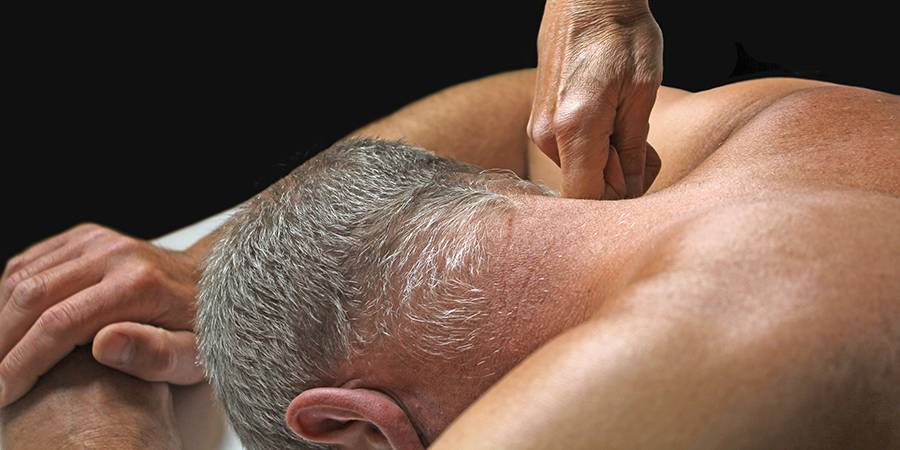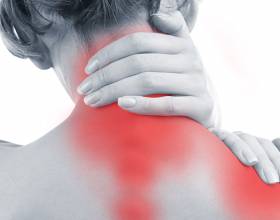Trigger Point Therapy: What is it and how does it work?

How does it work?
Based on the pioneering studies of Dr. Jay Shah and colleagues at the National Institute of Health, we know that inserting a needle into a trigger point can cause favorable biochemical changes which assist in reducing pain. It is essential to elicit so-called local “twitch” responses, which are spinal cord reflexes, to get the muscle to relax. Getting local twitch responses with dry needling is the first step in breaking the pain cycle.
What is a Trigger Point?
Myofascial (myo = muscle and fascial = spider web tissue surrounding muscle, bones and organs) Dysfunction is a muscle disorder characterized by trigger points. A Trigger Point is a small area of muscle that is in spasm (contracted), causing taut bands and hypersensitivity. These so called “knots” in the muscle cause a restriction of the blood supply (ischemia) reducing the amount of oxygen (hypoxia) leading to the accumulation of metabolic waste products and toxins which sensitize the trigger point causing it to send out pain signals and further increase local and/or referred symptoms. Thus, the local physiology of a trigger point involves a vicious repeating pain cycle that needs to be broken.
What is the Cause of a Trigger Point?
A Trigger Point in the muscles or fascia tissues lead to myofascial pain causing an entire muscle to be painful, tight, weak, and more easily fatigued. The cause is multi-factorial. It is built on a combination overworking or overstressing muscles, poor posturing, static or sustained postures, overuse, misuse, underuse and/or direct trauma of muscles. Trigger Points can be either the cause or a contributing factor of a wide variety of painful conditions that you have.
What Type of Problems can be Treated with Trigger Point (Dry) Needling?
Trigger Point (Dry) Needling can be used to treat a variety of musculoskeletal problems. Muscles are thought to be the primary contributing factor to the symptoms. Such conditions include, but are not limited to: neck, back and shoulder pain (i.e. frozen shoulder), headaches to include migraines and tension-type headaches, arm pain (i.e. tennis elbow), hip, buttock and leg pain (i.e. sciatic), jaw (TMD) pain, whiplash, carpal tunnel syndrome, and more. The treatment of the muscles has the greatest effect on reducing pain mechanisms in the body.
Is This Procedure Painful?
Yes and No. Trigger Point Therapy does have a reputation as being painful, but only when someone is pressing too hard on the sensitive muscles during massage. However, trigger point (dry) needling can be quite comfortable to receive. Most patients do not feel the insertion of the needle. The local twitch response elicits a very brief (surprising) painful response. Some patients describe this as “pressure”, having a little “electric shock” and others feel it more like a “cramping” sensation. Some clients may experience some mild discomfort but is often described as a “good pain” that rates low on a standard pain scale and is actually welcomed by most clients. Again, the therapeutic response occurs with the elicitation of the local twitch and that is a good and desirable reaction.
What Side Effects Can I Expect After the Treatment?
Most patients report some soreness after each procedure. The symptoms are described as muscle soreness or bruise feeling over the treated areas and into the areas of referred symptoms. Typically, the soreness lasts between a few hours and two (2) days. Some patients also get a “Sympathetic Reaction” which includes sweating, increased heart rate, dizziness and nausea but are less common. We recommend drinking a lot of water after treatments to flush the system.
How do we Treat Trigger Points?
Your PROCare Physical Therapist will first palpate specific muscles to locate the pain producing Trigger Points that are found along the taut band (“knot”) in the muscles. Once these are identified and confirmed as a source of your pain, they are treated with several methods of therapy that include, but is not limited to: Dry Needling, Acupressure (manual compression), Manual Therapy using Myofascial Release and Massage, Stretching, Moist Heat and a Home Exercise Program (theracane, stretching, heat, etc.).These forms of therapy are to De-Activate the Trigger Point to reset or relax the muscle, increase blood flow, and return the injured area to a more normal state (Homeostasis) of function. The crux of the treatment is to identify the causes which lead to the development of these triggers points and correcting them.
How Long Does it Take for the Procedure to Work?
This varies from patient to patient and from various conditions or problems you may have. Typically, it takes several treatment visits for a positive reaction to take place, especially if a chronic condition. Your PROCare Physical Therapist will set up a treatment plan of care based on your problems.
With Dry Needling, we are trying to cause a mechanical and biochemical change without using any pharmacological means. Therefore, we are looking for a cumulative response to achieve a certain threshold after which the pain cycle is broken and you begin to have pain relief.
What Should I Do After the Treatment?
Our recommendations vary depending on the amount treatment performed and the amount of soreness you describe. Based on an individual’s response, we usually recommend gentle stretching, modifications of activities (light exercise), moist heat to increase blood flow for healing and/or icing to decrease inflammation and swelling if present.
How do I know if I am a candidate for Dry Needling?
Patients with a pain causing the muscle to be painful or those not progressing as rapidly with manual therapy or other types of physical therapy treatments should ask their physical therapist or physician if they are a good candidate for this alternative therapy.
Is Dry Needling similar to Acupuncture?
From a Physical Therapist standpoint the only similarity between Acupuncture and Dry Needling is the tool that is used for this alternative therapy, the sterile disposable Acupuncture type needles. Dry Needling is used to release muscle tension and decrease muscle pain while Acupuncture focuses on balancing the flow of energy through the body. Dry Needling is strictly based on Western medicine principles and research versus Eastern medicine and use of meridians of pain pathways which is used in Acupuncture.
See Also

Ergonomic Tips Make Healthy Gardeners
“Gardening is a source of pleasure and exercise but don’t overdo a session.” “We must keep in mind that the most important gardening tool we have is our body. When we begin to hurt, it takes us away from the activity we enjoy so much, so it’s worth the time and effort to learn to garden ergonomicall...

6 Tips for Relieving Pain From Herniated Discs
Do you experience achy or sharp radiating pain to your shoulder, arm, buttock or leg? This may be an indicator of a bulging or herniated disc in your neck or back. Between each of your vertebrae that make up your spine, are small cushions called discs. Herniated discs are more common in the 30-50 age bracket. A herniated di...

Insurance Reimbursement for Physical Therapy Services
As a physical therapist, there are many things that you need to be aware of in order to be successful. One of these things is billing, and another is getting physical therapy reimbursement from insurance companies. Many people believe that there are declining numbers of reimbursements coming from insurance companies. Being a cos...

Leave a comment